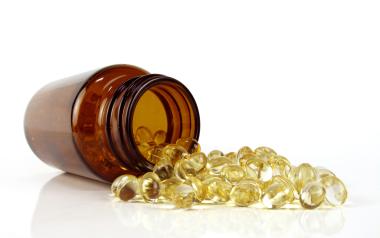Vitamin D is one of the most well-known and well-researched vitamins of all time. Often called “the sunshine vitamin,” vitamin D’s benefits are quite impressive, including improving thyroid function, increasing energy, supporting the immune system and bone health, as well as elevating mood. And while most of us already either take vitamin D daily, or at the very least know we should, sometimes how much we actually require gets lost in all the information out there. So just how much D does your family need, are they getting enough, and can too much be harmful?
Am I Deficient in Vitamin D?
The best way to find out your vitamin D levels is to get the 25(OH)D blood test. Healthy ranges fall somewhere in the 75-250 nmol/L. Many people are surprised to find that they fall below this range, even during the prime sunny months of summer when exposure is greater and we expect levels would be higher.
Can You Have Too Much Vitamin D?
Because vitamin D is a fat-soluble vitamin, there have been concerns about toxic levels building up in the body. However, The American Journal of Clinical Nutrition published a risk assessment for vitamin D in which it stated that no toxicity was observed below a serum level of 500 nmol/L (well above the upper level of the healthy blood range of 250 nmol/L). It also stated no toxicity was observed in studies reporting a daily vitamin D intake below 30,000 IU. While doctors do occasionally prescribe therapeutic doses of vitamin D that far exceed RDIs (Reference Daily Intake), it is typically for a short amount of time to treat specific ailments. It is not advised to attempt to self-supplement if you feel you are deficient, as vitamin D toxicity, though rare, can happen (typically as a direct result of over-supplementation and not from sunlight or food sources).
Hypercalcemia, a buildup of calcium in your blood, is one of the main consequences of vitamin D toxicity and can cause nausea, vomiting, weakness, and frequent urination. If left untreated, hypercalcemia can lead to kidney problems and bone pain, among other troubles.
The takeaway: Vitamin D toxicity (or vitamin D intoxication) is very rare. If there is ever any concern, it is recommended to have blood serum 25(OH)D levels checked to ensure they are within the recommended range.
How Can I Make Sure I'm Getting Enough Vitamin D?
Getting enough vitamin D isn’t just about taking the right supplement or getting outside. The process of absorbing and converting vitamin D into a form the body can use relies on a host of other vitamins and minerals, called cofactors. Vitamins A and K, magnesium, zinc, and boron are just a few friends that helps with vitamin D absorption and conversion, so making sure you adopt a healthy lifestyle with a vitamin-rich, varied diet, is a great way to give vitamin D a helping hand! (Make sure these vitamin D-rich foods are on your grocery list.) Help D help you!
Deets on D Dosage
While experts have yet to agree on a daily requirement for vitamin D, the standard RDI to prevent deficiency, according to Health Canada, is between 600 to 800 IU for adults and 400 IU for children. However, there are many who believe that this number should be much higher (somewhere around 2000-5000 IU per day). Because the RDI of vitamin D depends on a number of factors, including age, sex, weight, and medical history, it’s best to consult your healthcare provider for a recommendation customized specifically for your family’s needs.
Now that you know the importance of vitamin D, learn about the other supplements that every healthy child should be getting.






